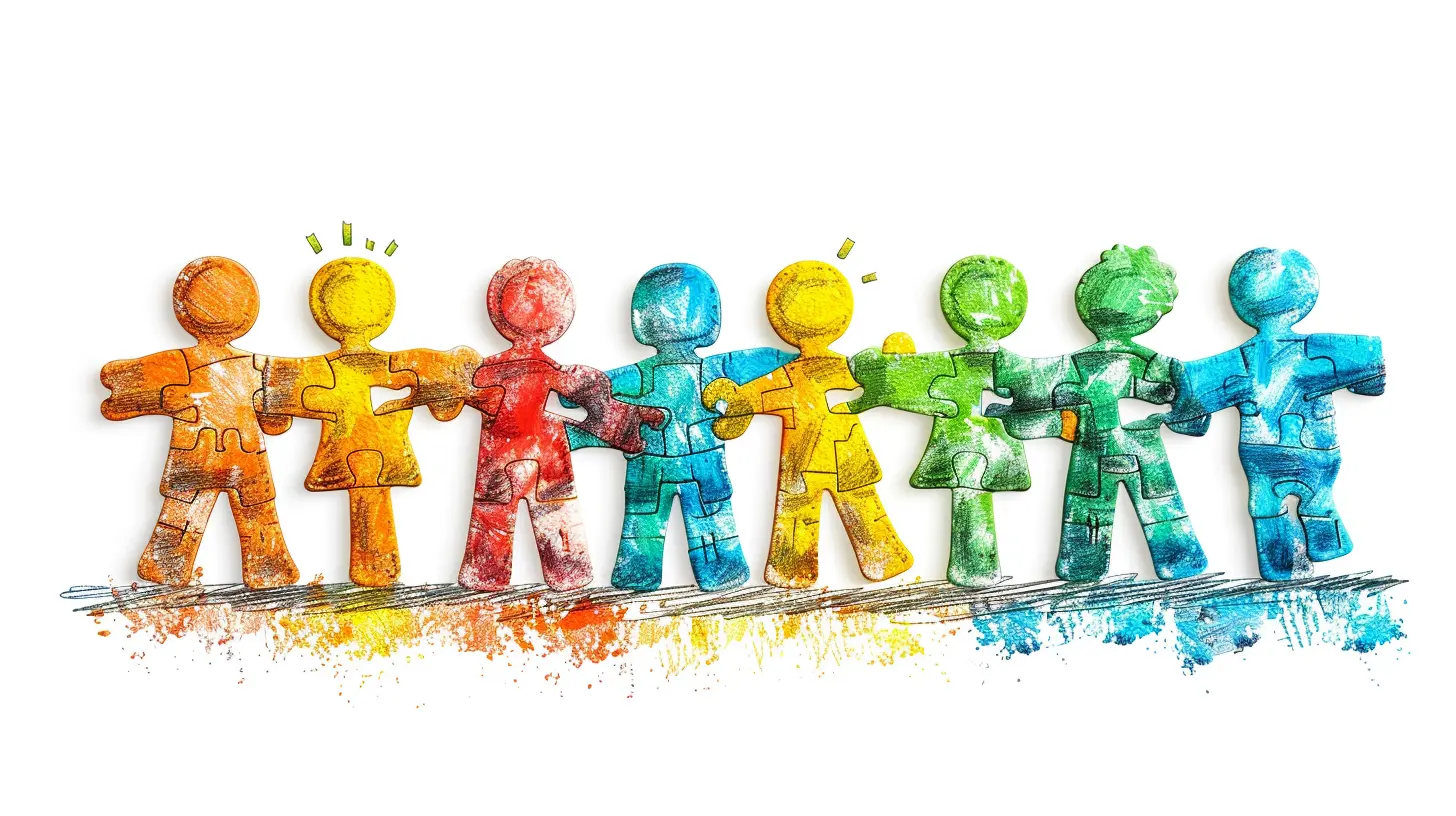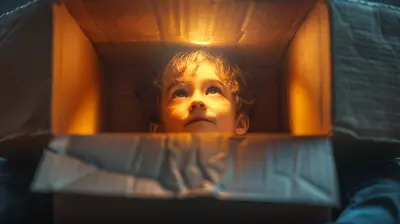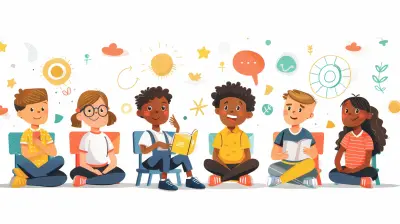Classroom Icebreakers to Build Stronger Connections
23 November 2024
Classrooms can sometimes feel a little stiff, especially at the start of a new school year or term. Whether you're a teacher meeting a new group of students or a student who's trying to blend into a community of new faces, breaking the ice can help ease those initial jitters. So, how do we go from awkward silences to building meaningful connections in the classroom? Well, that’s where classroom icebreakers come in!
In this article, we're going to dive into the power of icebreakers, explore why they're so effective, and share some top-notch activities you can use to create a fun, engaging, and connected learning environment. Ready to get started? Let’s break the ice!
Why Icebreakers Matter in the Classroom
You might be thinking, "Aren’t icebreakers just silly games?" Well, yes and no. Sure, some icebreaker activities involve laughter and can seem a little goofy, but they serve a much deeper purpose. Icebreakers help set the tone for teamwork, collaboration, and trust. They make people feel more at ease, opening the door for better communication and fostering a sense of belonging.Some Key Benefits of Classroom Icebreakers:
1. Encourage Participation: Students who are comfortable with their peers are more likely to participate in class discussions.2. Build Community: Icebreakers help form bonds among students, which can lead to a more supportive and cohesive classroom environment.
3. Reduce Anxiety: The start of a new school year or term can be nerve-wracking for some students, especially in unfamiliar settings. Icebreakers help alleviate this tension.
4. Enhance Collaboration: Getting to know each other early on can make group projects more effective and enjoyable.
5. Support Social-Emotional Learning: Icebreakers help students develop key social skills like listening, empathy, and cooperation.

The Science Behind Why Icebreakers Work
Let’s take a quick detour into the science of why icebreakers are so effective. When students are nervous or anxious, their brains release cortisol, the "stress hormone." High levels of cortisol can make it difficult for students to focus or engage in the learning process.Icebreakers, however, create a positive atmosphere and help reduce stress levels by triggering the release of oxytocin—the "bonding hormone." This hormone helps students feel more connected to their peers and creates a sense of trust. In short, icebreakers help create a more relaxed and open environment, setting the stage for effective learning.
How to Choose the Right Icebreaker
Before diving into specific activities, it’s important to consider a few things:- Class Size: Some icebreakers work well in small groups, while others are better suited for larger classes.
- Age Group: What works for young kids might not work for older students. Tailor the activity to the age group.
- Objective: Are you trying to simply break the ice, or do you want to focus on team-building or problem-solving?
- Time: Some icebreakers are quick and easy, while others can take a bit longer. Make sure you have enough time to complete the activity.
- Comfort Levels: Not all students are comfortable participating in high-energy or personal activities. Make sure there's a balance and that no one feels pressured to participate in a way that makes them uncomfortable.
10 Fantastic Classroom Icebreakers to Build Stronger Connections
Now that we’ve covered the basics, let’s get into the fun part—icebreaker activities you can use in your classroom. These are designed to be engaging, inclusive, and adaptable to different age groups and classroom settings.1. Two Truths and a Lie
This classic game never gets old! Each student takes turns sharing three statements about themselves—two are true, and one is a lie. The rest of the class has to guess which statement is the lie. It’s a great way for students to learn interesting facts about each other while having some fun.Why It Works: It encourages students to share personal details while also engaging in a bit of critical thinking as they try to spot the lie.
2. Find Someone Who…
Hand out a bingo-style sheet with various prompts, such as "Find someone who has traveled to another country" or "Find someone who has a pet." Students go around the room finding classmates who fit the descriptions and write their names down. The first student to complete the sheet wins!Why It Works: This scavenger hunt-style activity gets students mingling and learning more about each other in a non-intimidating way.
3. Human Knot
This is a perfect team-building activity. Have students stand in a circle and grab hands with two different people not standing next to them. The goal is to untangle the "human knot" without letting go of each other’s hands.Why It Works: It teaches problem-solving and cooperation while also breaking down physical boundaries in a playful way.
4. Speed Friending
Similar to speed dating, but without the awkward romance part! Set up chairs in two rows facing each other. Each pair of students gets two minutes to talk before switching partners. You can provide conversation prompts like "What’s your favorite hobby?" or "If you could travel anywhere, where would it be?"Why It Works: It ensures that everyone gets a chance to interact with multiple classmates, without the pressure of long conversations.
5. Story Chain
Start a story by giving the first sentence, and then go around the room with each student adding a sentence to the story. By the end, you’ll have a hilarious, often nonsensical story that everyone contributed to.Why It Works: It’s a low-pressure, creative way for students to engage with each other, and it fosters a sense of collaboration.
6. Would You Rather?
Pose fun hypothetical questions like "Would you rather have the ability to fly or be invisible?" and have students move to different sides of the room depending on their answer. You can do a quick follow-up discussion to hear why students chose their answers.Why It Works: It’s lighthearted, quick, and gives insights into students' personalities and preferences.
7. Name Toss
This one is great for learning names! Have students stand in a circle and toss a soft ball or beanbag to each other while saying the name of the person they’re throwing it to. Once everyone has had a turn, challenge the group to repeat the pattern faster or in reverse.Why It Works: It’s simple, fun, and helps students learn each other’s names in a playful way.
8. Common Ground
Divide students into small groups and give them 5 minutes to find as many things as possible that they all have in common (it could be favorite foods, hobbies, etc.). The group with the most commonalities wins!Why It Works: It helps students find connections with one another, which can foster friendships and a sense of community.
9. Pictionary with a Twist
Divide the class into teams and give them simple words or phrases to draw on the board while their team guesses. However, the twist is that they have to draw with their non-dominant hand!Why It Works: It adds a fun challenge that levels the playing field and encourages laughter.
10. Desert Island
Ask students, "If you were stranded on a desert island and could only bring three things, what would they be?" Have them share their answers, then discuss as a class how they might survive together based on what they brought.Why It Works: It sparks creativity and problem-solving, while also revealing a lot about students’ personalities and problem-solving approaches.
Tips for Successful Icebreakers
While icebreakers can be a blast, there are a few things to keep in mind to ensure they go smoothly:1. Set the right tone: Make sure students understand that the activity is meant to be fun and lighthearted. Stress that there's no pressure to share anything too personal.
2. Incorporate variety: Use different types of icebreakers—some physical, some verbal, some creative. This keeps things fresh and ensures you’re catering to different personality types.
3. Be mindful of inclusivity: Make sure that all students feel included and that no one is left out or uncomfortable.
4. Debrief after the activity: Take a few moments to reflect after the icebreaker. Ask students how they felt about the activity and what they learned about their classmates.
Wrapping Up
Classroom icebreakers are more than just fun games—they're a powerful tool for building connections, fostering collaboration, and creating a positive learning environment. Whether you're working with a group of shy students or a class full of extroverts, the right icebreaker can help set the stage for a successful school year.So, the next time you find yourself in front of a new group of students, don’t let the silence linger. Break the ice, and watch as those awkward first moments melt away into meaningful connections!
all images in this post were generated using AI tools
Category:
Teacher ResourcesAuthor:

Fiona McFarlin
Discussion
rate this article
18 comments
Zedric Gonzalez
Great ideas for fostering connection and engagement among students!
February 2, 2025 at 9:46 PM

Fiona McFarlin
Thank you! I'm glad you found the ideas helpful for enhancing student connections!
Lilith McFarlin
Great article! Icebreakers are essential for creating a positive classroom environment. They foster connections among students, encourage participation, and help build trust. Implementing these strategies can truly enhance the learning experience and promote collaboration throughout the school year.
January 28, 2025 at 8:35 PM

Fiona McFarlin
Thank you! I'm glad you found the article helpful. Building connections through icebreakers is indeed key to a positive classroom atmosphere!
Julian McManus
Effective icebreakers foster engagement and community spirit.
January 24, 2025 at 6:02 AM

Fiona McFarlin
Absolutely! Icebreakers are key to creating a welcoming atmosphere that encourages participation and strengthens community ties among students.
Lucas McCaw
This article offers practical and engaging icebreaker activities that can significantly enhance classroom dynamics. These strategies not only foster stronger connections among students but also create a more inclusive and supportive learning environment. A must-read for teachers looking to improve classroom relationships!
January 19, 2025 at 9:05 PM

Fiona McFarlin
Thank you for your kind words! I'm glad you found the icebreaker activities helpful for enhancing classroom dynamics.
Silas Cruz
Great ideas for fostering classroom connections!
January 16, 2025 at 1:10 PM

Fiona McFarlin
Thank you! I'm glad you found the ideas helpful!
Bryce McAdoo
While icebreakers foster connections, their effectiveness hinges on cultural sensitivity and inclusivity; educators must thoughtfully select activities to resonate with diverse student backgrounds.
January 11, 2025 at 9:45 PM

Fiona McFarlin
Absolutely! Thoughtful selection of icebreakers is crucial for fostering genuine connections among diverse students, ensuring everyone feels included and respected.
Charlie McInnes
Creating connections in the classroom is essential for a vibrant learning environment! These icebreakers not only spark joy but also foster trust and collaboration among students. Let's embrace these moments to build a supportive community and inspire meaningful relationships!
January 5, 2025 at 1:52 PM

Fiona McFarlin
Absolutely! Icebreakers are key to nurturing a positive classroom atmosphere and encouraging collaboration. Let’s continue to foster those essential connections!
Buzz Allen
Great article! Implementing effective icebreakers not only fosters a welcoming classroom environment but also strengthens relationships among students. These activities can significantly enhance collaboration and communication, setting a positive tone for the entire school year.
January 2, 2025 at 12:18 PM

Fiona McFarlin
Thank you for your insightful comment! I completely agree—effective icebreakers are key to building relationships and enhancing collaboration in the classroom.
Tabitha Lamb
Icebreakers are the heartbeat of a classroom! They pave the way for deeper connections, foster collaboration, and create a welcoming atmosphere. Let's inspire learning together!
December 30, 2024 at 8:35 PM

Fiona McFarlin
Absolutely! Icebreakers set the tone for a collaborative and inclusive environment, essential for meaningful learning experiences. Let's keep inspiring!
Evelyn McVeigh
Icebreakers are powerful tools that can transform a classroom into a vibrant community. By fostering connections, we create a supportive environment where every student feels valued and heard. Let’s embrace these activities to unlock potential, inspire collaboration, and cultivate lasting friendships!
December 26, 2024 at 8:25 PM

Fiona McFarlin
Absolutely! Icebreakers are essential for building community and fostering collaboration among students. They create an inclusive atmosphere that enhances learning and friendship.
Zephyros McElroy
What a fantastic read! Icebreakers truly transform classrooms, fostering connections and boosting engagement. Let's make learning a joyful journey together! 🎉📚
December 15, 2024 at 1:01 PM

Fiona McFarlin
Thank you! I'm glad you enjoyed it. Icebreakers are indeed a powerful way to enhance classroom dynamics and create a fun learning environment! 🎉
Karson Bellamy
Because nothing says 'let's connect' like awkward games and forced laughter. Get ready to break the ice, folks!
December 12, 2024 at 10:06 PM

Fiona McFarlin
True! While icebreakers may feel awkward at first, they can spark genuine connections and create a more comfortable classroom environment.
Arwen Alexander
Let the giggles begin! Icebreakers: the secret ingredient to classroom magic!
December 11, 2024 at 3:53 AM

Fiona McFarlin
Absolutely! Icebreakers truly set the tone for a fun and engaging learning environment. Let the connections flourish!
Vito Newman
This article offers fantastic icebreaker ideas that can truly transform classroom dynamics. Engaging activities foster stronger connections among students, making learning more enjoyable and collaborative. Implementing these strategies will not only break the ice but also build a supportive learning environment. Great resource for educators!
December 6, 2024 at 8:18 PM

Fiona McFarlin
Thank you for your kind words! I'm glad you found the icebreaker ideas helpful for fostering connections in the classroom. Happy teaching!
Rosanna Horne
Who knew icebreakers could melt hearts? 🧊❤️ These fun activities are like a secret recipe for classroom magic! With laughter and a sprinkle of creativity, we can turn strangers into friends. Get ready to break the ice and build connections that last all year long!
November 28, 2024 at 9:58 PM

Fiona McFarlin
Thank you! Icebreakers truly do create a warm and welcoming atmosphere, fostering lasting friendships in the classroom. ✨
Skyler McCune
Why did the scarecrow win an award? Because he was outstanding in his field! Just like these icebreakers can turn your classroom into a thriving garden of connections. Let’s make learning bloom with laughter and camaraderie! 🌼✨ #IcebreakerMagic
November 27, 2024 at 9:06 PM

Fiona McFarlin
Great analogy! Icebreakers truly are the seeds that help our classroom community grow. Let's keep the laughter and connections flourishing! 🌱✨
Lira Miller
This article offers valuable insights into effective icebreakers that can enhance classroom dynamics. Building stronger connections among students fosters a supportive learning environment, promoting collaboration and engagement. Thank you for sharing these practical strategies!
November 27, 2024 at 5:27 AM

Fiona McFarlin
Thank you for your thoughtful comment! I'm glad you found the strategies helpful for enhancing classroom dynamics.
Soraya Diaz
Great ideas! Building connections enhances learning and community!
November 26, 2024 at 4:58 AM

Fiona McFarlin
Thank you! I wholeheartedly agree—building connections is key to fostering a thriving learning environment.
MORE POSTS

Empowering Students to Think Outside the Box

How Student Exchange Programs Can Help You Learn a New Language Faster

Understanding the Application Process for Student Exchange Programs

Educators Unite: Building Strong Teacher Collaboration Networks

How to Foster Civic Engagement in the Digital Age

How to Choose the Best Distance Learning Tools

Understanding the Roles and Responsibilities of Citizens in a Democracy

The Importance of Play in Early Childhood Education

Integrating Technology and Tradition: The Future of Education

How to Foster Collaboration Between Special and General Education Teachers

Cultural Diffusion: How Ideas Cross Borders